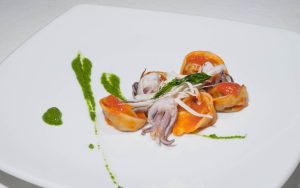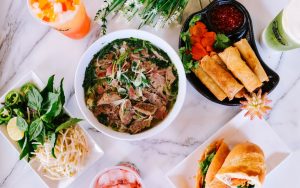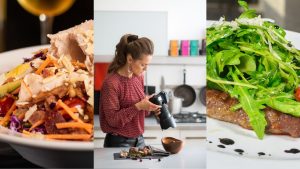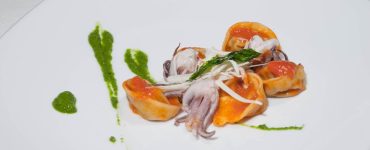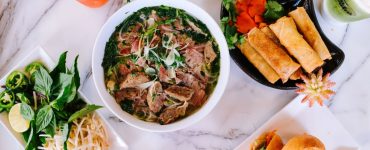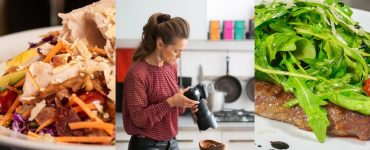In the world of food styling, there is a powerful technique that can elevate the visual impact of your photographs: negative space. Often overlooked, negative space refers to the empty areas surrounding the main subject in an image. It’s the art of purposefully leaving room to let simplicity and minimalism shine.
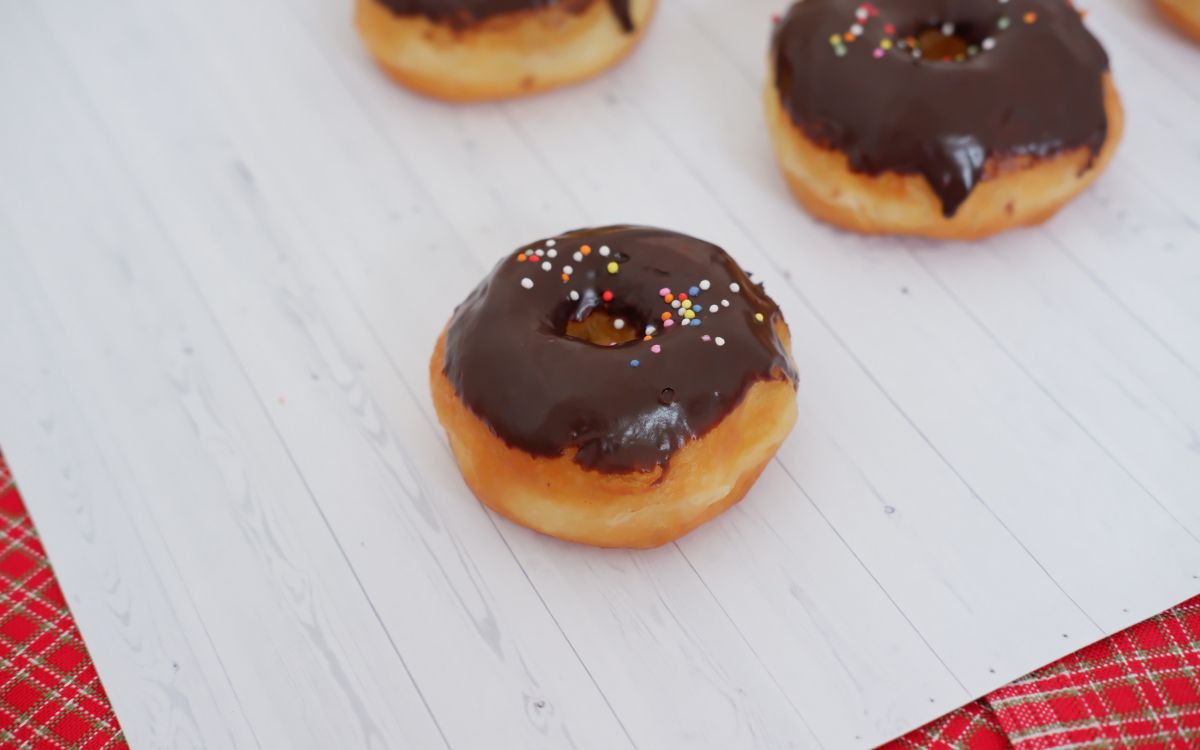
By strategically incorporating negative space, you can create a harmonious balance, draw attention to the beauty of your dish, and evoke a sense of elegance. In this blog post, we will delve into the realm of using negative space in food styling, exploring the concepts of simplicity and minimalism, and discovering how these elements can transform your food photography into works of art.
Understanding Negative Space in Food Styling
Negative space is a fundamental concept in the world of food styling that holds immense power in creating captivating visuals. At its core, negative space refers to the empty areas surrounding the main subject in an image. These empty spaces might seem insignificant at first glance, but they play a crucial role in the overall composition and impact of a photograph.
Definition and Concept of Negative Space
Negative space, also known as white space or breathing space, is the intentional absence of content in a composition. It is the blank canvas that allows the main subject to stand out and be the focal point of the image. By purposefully leaving empty spaces around the subject, you create a visual balance that draws the viewer’s eye and emphasizes the beauty of the dish.
The Role of Negative Space in Creating Visual Balance
Negative space is not just about empty areas; it serves a vital purpose in creating visual balance within a photograph. It allows the viewer’s eye to rest and prevents the image from feeling cluttered or overwhelming. The strategic use of negative space helps to establish a harmonious composition by providing a sense of breathing room and emphasizing the significance of the subject.
Examples of Negative Space in Food Photography
To better understand the impact of negative space in food styling, let’s explore some examples. Imagine a plate of vibrant red strawberries beautifully arranged on a pristine white background with ample empty space surrounding them.
The simplicity and minimalism created by the negative space allow the strawberries to pop and evoke a sense of freshness and indulgence. Similarly, a single slice of cake elegantly positioned on a plate with a vast empty backdrop creates a focal point that immediately captures attention. These examples showcase the power of negative space in elevating the aesthetics of food photography.
The Power of Simplicity in Food Styling
Simplicity is a guiding principle in food styling that holds tremendous power in creating visually captivating and appetizing photographs. It is the art of paring down and distilling the elements to their essence, allowing the beauty of the dish to take center stage. By embracing simplicity, you can create a sense of focus, elegance, and clarity in your food styling compositions.
Exploring the Concept of Simplicity in Food Presentation
In food styling, simplicity goes beyond just the visual aspect; it encompasses the overall presentation of the dish. It involves carefully selecting and arranging elements to create a clean, uncluttered look. Simplifying the presentation allows the true colors, textures, and shapes of the food to shine, making it more enticing and appealing to the viewer.
Benefits of Incorporating Simplicity in Food Styling
There are numerous benefits to incorporating simplicity in your food styling endeavors. Firstly, it enhances the visual appeal of the dish by allowing the natural beauty of the ingredients to be the star. By avoiding excessive props or complicated compositions, simplicity creates a sense of elegance and sophistication.
Secondly, it communicates a sense of purity and freshness, appealing to the viewer’s desire for wholesome and uncomplicated food experiences. Lastly, simplicity in food styling can make the dish more relatable and approachable, inviting the viewer to envision themselves enjoying the meal.
Creating a Focal Point with a Minimalist Approach
One of the key aspects of simplicity in food styling is the creation of a strong focal point. By minimizing distractions and extraneous elements, you can direct the viewer’s attention to the main subject of the photograph. Whether it’s a perfectly plated dessert or a beautifully arranged salad, a minimalist approach allows the viewer to focus on the intricate details, textures, and colors of the dish, creating a captivating visual experience.
Embracing Minimalism in Food Styling
Minimalism is a design approach that emphasizes simplicity, clean lines, and a focus on essential elements. When applied to food styling, minimalism allows the beauty of the dish to take center stage, creating visually stunning compositions that evoke a sense of elegance and refinement.
By embracing minimalism, you can streamline your food styling process and create images that are visually striking and impactful.
Defining Minimalism in the Context of Food Styling
Minimalism in food styling involves distilling the elements to their bare essentials, removing any unnecessary clutter or distractions. It is about creating a visual narrative with the fewest possible elements while still conveying a sense of beauty and intention. Minimalist food styling relies on the inherent appeal of the ingredients, textures, and colors to captivate the viewer’s attention.
Techniques for Achieving a Minimalist Aesthetic
To embrace minimalism in your food styling, there are several techniques you can employ. First, choose a limited color palette that complements the dish and creates a cohesive visual experience. By focusing on a select few colors, you can create a sense of harmony and unity within the composition.
Second, simplify the props and background elements to draw attention to the main subject. Remove any unnecessary items that do not contribute to the overall visual narrative.
Lastly, streamline the composition and plating by using clean lines and negative space. Arrange the elements with intention, creating a balanced and visually pleasing arrangement that highlights the beauty of the dish.
Using Negative Space to Enhance Food Photography
Negative space is a powerful tool in food photography that can greatly enhance the visual impact and storytelling potential of your images. By strategically incorporating negative space, you can create compositions that draw attention to the main subject, highlight its textures and form, and evoke a sense of elegance and simplicity.
How Negative Space Draws Attention to the Subject
Negative space acts as a visual resting place for the viewer’s eyes, allowing the main subject to stand out and capture attention. By surrounding the subject with empty areas, you create a contrast that emphasizes the dish and makes it visually compelling. The negative space acts as a frame, directing the viewer’s gaze towards the focal point of the photograph and creating a visual hierarchy.
Tips for Effectively Utilizing Negative Space in Food Photography
To maximize the impact of negative space in your food photography, consider the following tips. First, strategically place the main subject within the frame, leaving ample empty space around it. This will ensure that the subject remains the focal point of the composition.
Second, use negative space to emphasize the textures and form of the dish. By providing breathing room around the subject, you allow the viewer to appreciate the details and intricacies of the food.
Lastly, strive for a balance between negative and positive space. Experiment with different compositions and placements to achieve a harmonious visual arrangement that captures the viewer’s attention.
Practical Tips for Incorporating Negative Space in Food Styling
Incorporating negative space effectively in your food styling can greatly enhance the visual impact and aesthetics of your photographs. Here are some practical tips to help you master the art of using negative space in your food styling compositions.
Experiment with Different Angles and Perspectives
When styling your food, try capturing it from different angles and perspectives. Explore overhead shots, side angles, or close-ups to find the most compelling composition that allows for the incorporation of negative space. Each angle can create a unique visual story and provide opportunities to incorporate negative space in interesting ways.
Incorporate Natural Elements to Enhance Negative Space
Consider incorporating natural elements such as foliage, fresh herbs, or vibrant flowers to enhance the negative space in your compositions. These elements can add a touch of organic beauty and create a sense of harmony with the main subject. Strategically place them in the empty areas surrounding the dish to create a visually appealing balance.
Apply the Rule of Thirds to Create Dynamic Compositions
The rule of thirds is a composition guideline that divides an image into a 3×3 grid. Placing the main subject along the intersecting lines or at the points of intersection can create a visually dynamic composition. Use the negative space in the remaining two-thirds of the frame to provide a sense of balance and emphasize the subject’s importance.
Use Negative Space to Tell a Story or Evoke Emotions
Negative space can be a powerful storytelling tool in food styling. Consider the narrative you want to convey through your photograph and use the negative space to enhance that story. For example, a plate of half-eaten cookies surrounded by empty space can evoke a sense of indulgence or anticipation. Use negative space creatively to evoke specific emotions and engage your viewers.
Conclusion
As we conclude this journey into the world of negative space, simplicity, and minimalism in food styling, we hope you have gained valuable insights and inspiration. By embracing negative space, you have the power to transform your food photographs, bringing out the essence and beauty of your dishes.

